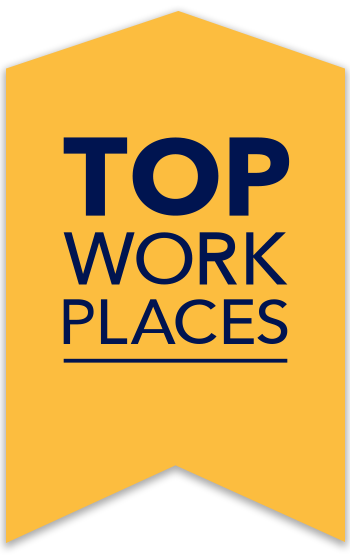Organizations everywhere invest in employee well-being to promote employee engagement, retention, and profitability. Leaders must be familiar with health and well-being strategy in order to maximize that investment. That way, it’s easier to prevent burnout, sick days, and absenteeism.
Well-being is a personal subject impacting employees’ physical, mental, and emotional health— making it even more crucial to get it right. Creating a comprehensive, preventative strategy involves careful planning, implementation, and evaluation. This blog post explains how to create a wellness program, including six simple steps to get you started.
Why should you create a well-being strategy?
A health and well-being strategy is a win-win for employees and employers alike. For employees, increased well-being leads to higher levels of personal satisfaction and lower levels of burnout and stress. For employers, robust well-being strategies help attract top talent and gain valuable employer recognition.
And that’s not it. Well-being strategies also:
- Attract top talent
- Improve employee engagement
- Improve employee retention and resilience
- Improve morale and company culture
- Increase organizational productivity and performance
- Improve training and development
What should be included in an employee well-being strategy?
Employee well-being is all about health and happiness. While there are many health trends, research shows there are a few tried and true steps to effectively boost employee well-being for employees and organizations. Strategize your vision and what initiatives will get you there.
Types of well-being
There are a few different types of employee well-being, including:
- Social well-being has been impacted most in recent years. This type of well-being revolves around interpersonal relationships and a connection to the larger purpose.
- Psychological well-being measures engagement, satisfaction, accomplishment, motivation, work-life balance, and mental health.
- Physical well-being is all about keeping your body healthy. This includes activity, exercise, nutrition, screen time, sleep, and rest.
- Financial well-being can be overlooked, but helping employees budget, manage debt, plan for the future, and live comfortably is extremely valuable.
Well-being initiatives
After deciding on a focus area, it’s time to incorporate some well-being initiatives into your strategy. Here are some of the most essential and efficient initiatives to kick-start your well-being process:
Health-promotion initiatives improve well-being by encouraging higher physical and mental health awareness levels. From employee walking competitions to Employee Assistance Programs, these initiatives help everyone stay happier and less stressed.
Company culture initiatives encourage thoughtful work environments, regular performance reviews, benefits packages, effective communication, and fun perks— among many other options.
Company value initiatives help employees feel valued and stay motivated. Value-based initiatives usually focus on company mission, vision, corporate social responsibility, DEI, and company-specific guiding principles.
Relationship-building initiatives are always a good idea. Healthy, strong interpersonal relationships keep employees engaged and excited about shared success. Plus, positive relationships make people feel good.
Training and development also have a significant impact on employee well-being. Growth initiatives focused on training, development, and mentoring show an investment in employees’ personal and professional goals, boosting loyalty and retention.
6 Steps for creating an employee well-being strategy
You will need a strategic, systematic approach to create a more substantial employee well-being program. Remember that creating a workplace health and well-being strategy is an ongoing process that requires commitment and continuous effort.
Fostering a culture of well-being and consistently prioritizing the health and satisfaction of your employees helps leaders create a positive work environment that benefits both individuals and the organization as a whole. These six steps to do just that:
1. Consider business goals
All great well-being strategy action plans start with goal alignment. Make sure your employee well-being goals support key business goals, and vice versa. Suppose your organization is focused on improving performance. Leaders should use well-being tools like employee recognition to achieve that goal, while simultaneously boosting engagement and productivity.
2. Gather feedback from employees
Because employee experience impacts engagement, organizations must ask for employee feedback regularly. Confidential surveys help employees feel comfortable providing honest feedback about their well-being. Plus, they allow employers to monitor long-term success, gather data, and add action items.
Health and well-being are personal topics, so it’s essential to provide employees with confidential and supportive opportunities for feedback. The more you do with their feedback, the more employees engage with the process.
Learn more about Analyzing Employee Engagement Results and Energage’s confidential employee survey here.
3. Evaluate your employee benefits package
Providing a comprehensive and competitive employee benefits package is another essential part of workplace well-being. Benefits like Employee Assistance Programs (EAPs) help employees find valuable wellness information, resources, and tools. Remember, it’s essential to use feedback to ensure your benefits package satisfies employee wants and needs. Every group of employees is different. If you aren’t asking how you can improve well-being for your unique workforce, you’ll never know.
4. Consider your workplace culture
Great leaders know the impact of leadership on workplace culture. Workplace culture refers to an organization’s shared beliefs, behaviors, values, and working environment. It significantly impacts employee well-being and company communication by influencing how employees view themselves, their teammates, and leadership.
No longer just a superficial aspect, culture is a foundational element that shapes the entire employee experience. Employees who feel healthy and happy achieve higher job satisfaction and a sense of belonging, boosting productivity and culture.
Think about how your workplace’s unique culture could benefit from higher levels of employee well-being and how your leadership team can support the employee experience more consistently and sustainably. Small additions to your well-being plan— like more workplace flexibility and opportunities for honest feedback- could make a big difference in your culture and employer brand.
5. Set and activate realistic goals
Realistic goals are crucial for any health and well-being strategy. Once leaders know what their employees want and need, it’s time to make a well-being strategy action plan with achievable goals. Not only do smart goals make it easier to celebrate success, but they also motivate employees by making health and wellness a main priority.
6. Measure and review your employee well-being strategy regularly
The final tip for how to create a wellness plan is to measure and review your insights regularly. Collect data and feedback often to see what’s working and what could use more energy. Employees’ well-being requests will change over time and after getting helpful treatment and support.
Checking in regularly and thoroughly ensures that everyone’s needs are cared for, helping teams pivot and stay healthy. Plus, that accountability from leadership creates employee loyalty and employer appreciation.
Gather honest employee feedback with Top Workplaces
Every year, Energage recognizes companies with great well-being initiatives with the Top Workplaces for Well-Being award. But there’s more. We also provide a leading employee engagement platform where you can collect, analyze, and act on employee well-being feedback.
Plus, the platform offers 100% employee confidentiality for more honest feedback. Nominate your company today to take the next step towards a happier and healthier workforce!


